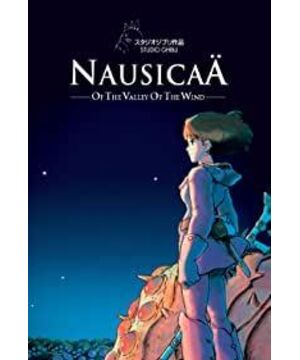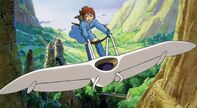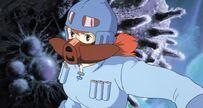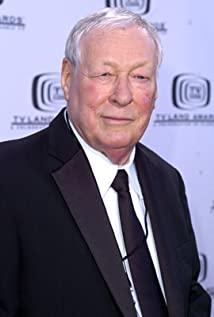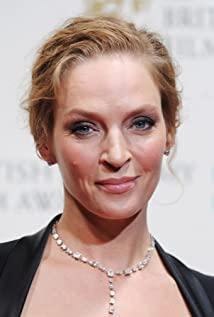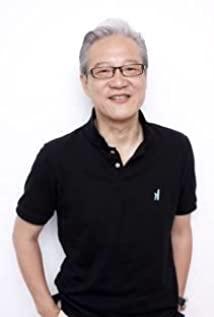The entire world view of Nausicaa is set like this: In ancient times (that is, we are now) a world war broke out, and the abuse of chemistry and nuclear weapons led to the complete destruction of the biosphere. The ancients used genetic technology to create a series of new organisms, which allowed them to form an artificial biosphere to clean up pollutants on the surface. In this system, the plants in the Sea of Corruption absorb pollutants in the biosphere, and various insects and king insects eat plants, forming a cycle of the biosphere. At regular intervals, the king worm will migrate out on a large scale (tsunami), bringing plant spores to new areas and expanding the area of the sea of rot. After thousands of years of growth, the old sea of rot will be petrified after exhausting pollutants. At this time, the pollutants have been solidified and the environment has been cleaned up (the holes they found underground in the animation are in the middle of the cleanup).
Plants emit toxic spores during growth, so humans can only survive in places where there is no sea of rot. According to the plan of the ancients, the sea of rot will eventually cover the whole world, so the forest people have developed a technology to coexist with nature in the sea of rot in order to survive the final doomsday.
However, Nausicaa and Selmu (the male protagonist, the forest man, the animation plot did not progress to his appearance) visited the scientific research base left by the ancients (called the mausoleum in the story) and learned that modern people are actually experimental animals. It is mainly to study the survival ability of human beings in a polluted environment, and cannot live in a clean world. When the pollution is eliminated, modern man will inevitably perish. After the tomb explores the restoration of the environment, it will use refrigerated cells to resurrect ancient people and ancient creatures, so that the earth will return to ancient times.
So the two sides have a showdown, and modern people have two choices:
1 According to the original arrangement, live in harmony with nature until finally perish.
2 Deny the plan of the ancients. Both humans and the Corruption Sea will break away from the control of the ancients and embark on an unknown path.
The most controversial part of the comic is Nausicaa's choice. If you choose 1, then humans have at least thousands of years to survive, and the computer promises to provide technology to modify modern human genes so that they can live in a pollution-free world. The road chosen in the comic is 2. Nausica destroyed the tomb and wiped out all the ancient heritage, allowing mankind to break away from the route arranged by the ancients and find a new path on its own. Although it is not clearly stated, humans can only survive by destroying the biosphere centered on the Corruption Sea. (Of course, all of this is done without the knowledge of other people. Only Selmu and the Forester know her actions. This is also the biggest controversy among comics fans about Nausicaa.)
As a person who "lives in harmony with nature" In the opening story, Nausicaa of the Wind is obviously contrary to mainstream environmentalism, especially those primitive environmentalism that regards nature as sacred and requires that humans’ impact on nature be reduced to a minimum. The various miracles of the natural world arranged in the animated version turned out to be a play directed by the ancients. It was originally hoped to fool humans at this step (that is, the state at the end of the animated version). In the comics, Nausicaa and Thielmu was also hit hard after learning the truth.
But Miyazaki did not deny environmental protection itself. He just hopes to look at the relationship between man and nature more rationally. Nature is not sacred. What is sacred is life. Without freedom, life has no meaning. Human beings will treat themselves as they treat nature. "Reforming nature" and "reforming mankind" are both ways to make life lose its divinity.
I have read a biography of Guevara, which summarizes Guevara's values as follows: In order to build an ideal future, he wants to destroy everything around him. The ideal village and tomb in the comics actually refer to this kind of thing. Miyazaki once witnessed the rise and failure of the left-wing movement, and only their generation would draw such a story.
In fact, Miyazaki's nature can be regarded as a metaphor for "fate". The so-called "enjoy every dish prepared for you by fate" is just a cool looking cowardly, and it is unrealistic to want to manipulate fate. Delusion, because it is impossible to see through, talents become human beings. Perplexity and pain are the proof that we are alive.
At the end of the story, between freedom and survival, Nausicaa chose freedom. Wind is the symbol of freedom. Nausicaa is the princess of the Valley of the Wind. This is the hidden meaning of the title-life is precious, love is more expensive High, if it is free, both can be thrown.
View more about Nausicaä of the Valley of the Wind reviews


